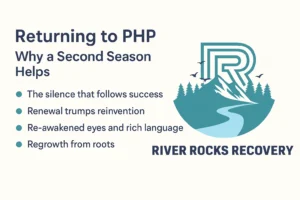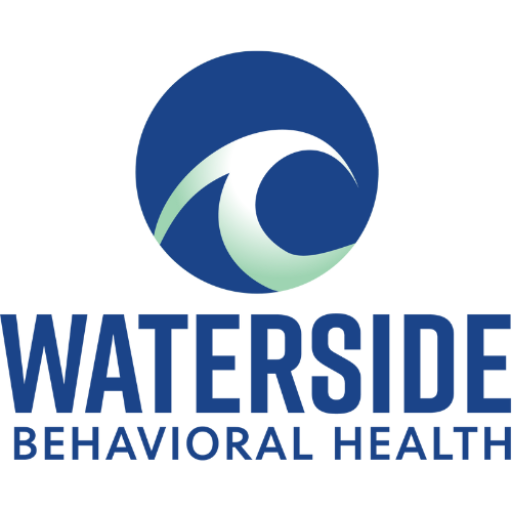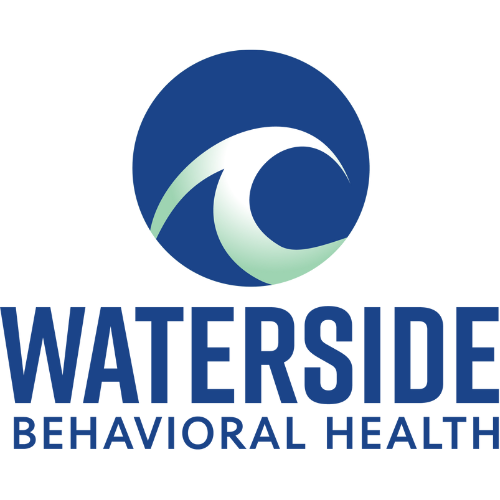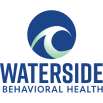I remember sitting with a mother whose son had just been hospitalized. Her voice was tight: “If I were better, he wouldn’t be here.” She wore guilt like a second skin. I leaned in and said: Choosing help isn’t failing him. Sometimes it’s the only love that holds when we don’t have the strength ourselves.
If your young adult is in crisis, you’re scared, exhausted, full of “what ifs.” You aren’t failing them—and a partial hospitalization program might be the most supportive move you can make. At Waterside Behavioral Health, our partial hospitalization program in Bristol County, MA is designed to help your loved one heal—while staying connected to home, family, and the life they’re working to rebuild.
Below is what I wish every parent knew: what PHP can and can’t do, how to decide, how to partner with the program, and how to protect yourself in the process.
Why Many Parents Resist “Stepping Back” — And Why That Fear Makes Sense
You built your child’s world for years. You intervened, advocated, managed, held. Now, when the logic says “more help is needed,” it feels like giving up.
You worry: Will this feel like I’m abandoning him? Will they resent me? Will it make him weaker?
Those fears are valid. But consider this: loving well sometimes requires handing a weight you weren’t meant to carry alone.
PHP doesn’t remove you. It supports a hand‑off—one where professionals gradually carry the burden, so your child doesn’t collapse under pressure you weren’t meant to bear alone.
What PHP Actually Looks Like (So You Can See It, Not Fear It)
Here’s the architecture behind a good partial hospitalization program:
- Daytime structure: therapy groups, individual counseling, skills training, medication management, psychoeducation
- Return home overnight
- Multi‑disciplinary teams (therapist, psychiatrist, case manager, nurse)
- Integration of what’s happening outside—school, work, relationships—into session work
- Planning for transition to lower levels of care (such as IOP or outpatient)
- Family involvement—education, sessions, communication
In many hospital PHPs, group therapy and skill sessions might run from morning to early afternoon.
A good PHP bridges treatment and life—not rips you from it.
Why “Regular Treatment” Sometimes Falls Short—and PHP Helps
Parents tell me: “He went to therapy for months. He improved. Then he fell off.” I tell them: that cycle is common for treatments not built for crisis seasons.
Here are why many treatments don’t hold—and how PHP fills those gaps:
- Low contact density
Weekly therapy leaves too much vacuum in between. Crises reign there. PHP fills those gaps with consistent daily support. - No direct engagement with triggers
In outpatient therapy, you often analyze after the fact. In PHP, triggers—relational fights, school stress, cravings—come into the room the same day to be deconstructed. - Weaker supports for relapses or slips
Programs often treat relapse as failure, not data. PHP sees slips as part of learning, offering prompt repair and recalibration. - Poor continuity
Aftercare plans are optional in many programs. You leave and the scaffold disappears. PHP is explicitly designed for transitions, not endpoints. - Limited family inclusion
In many treatment models, family is peripheral. In PHP, family is often brought in—because healing your child’s world includes healing yours too.
That’s what makes PHP potentially more “sticky”—it’s trying to hold more cracks before they become chasms.

How Parents Can Partner with PHP to Maximize Healing
You don’t have to just hope the program will work. You can be an active, caring partner. Here’s how:
- Be open about your child’s outside life
Share their school schedule, job demands, relationships. The more the team knows, the more real they can make the work. - Ask for education and coaching
Many PHPs offer parent or family sessions. Accelerate your learning—so when crises surge, you respond, not overreact. - Balance support and autonomy
Let the program lead clinical work. You hold love, safety, boundaries—not therapy responsibility. - Manage your expectations
Healing is messy. There will be days of regression. Don’t judge the journey by those. Look for margin over mastery. - Protect your capacity
If your child is in deep crisis, your own emotional tank is at risk. You need your supports—therapy, rest, community—to show up for them. - Ask for transparency
Request weekly check-ins, progress reports, discharge plans. You deserve to understand what’s happening, not be left guessing.
When parent + program move in alignment, trust deepens, resistance softens, change grows more resilient.
Common Questions and Honest Answers (Integrated)
Will PHP make them dependent on treatment?
Not necessarily. A good PHP is not indefinite—it’s a scaffold, not a permanent crutch. Over time, the program is designed to dissolve as internal resources grow.
Is this admitting defeat?
No. Sometimes the bravest love is choosing help. It’s not saying, I can’t. It’s saying, I won’t let this crisis define his forever.
Can they still attend school or work during PHP?
Some PHPs are structured for flexibility. While full academic or job schedules may be unrealistic early on, many programs allow modified participation or part day blocks. (And once stabilized, the transition plan supports return to full life.)
Will therapy or meds still be part of their plan?
Yes. PHP doesn’t replace therapy or medications—it integrates them. The idea is synergy, not substitution.
What if they resist treatment or relapse mid‑way?
That’s expected. A good PHP doesn’t shut the doors. It leans in, asks what broke, recalibrates, repairs. You want a program that holds—not claims perfection.
How long will PHP last?
It can vary: weeks to months, based on severity and progress. The trajectory is personalized, not one-size-fits-all.
What Loving Looks Like When You Choose PHP
You might think choosing PHP is withdrawing your presence. But in many ways, it’s loving more deeply.
- You’re handing off the clinical strain so your relationship doesn’t turn into the treatment field.
- You’re trusting that your child deserves care large enough for their crisis.
- You’re opening a doorway rather than collapsing under the weight of hope.
- You’re signaling you believe in them enough to invest in a container strong enough to hold their change.
When I’ve sat with parents after PHP begins, I see relief. Not because the crisis is over—but because the fight isn’t solo anymore.
A Parent’s Story of Choosing PHP
Michael sat across from me, exhausted. His daughter was spiraling. He’d tried outpatient therapy, emergency hospital stays, nightly phone calls. Nothing sustained.
We designed a PHP with boundaries—therapy blocks, group, consistent schedule. Michael brought in her lunches. He joined family therapy. They set communication rules at home. He protected his own rest.
Within weeks, the daughter began to bring relational tension into therapy. She admitted fear she’d isolate again. The team helped process it same day. Michael watched her lean into support she’d been resisting.
Six weeks later, she texted her dad: “I feel held. I feel safer.”
Michael told me: I didn’t surrender. I put my love into a structure that could carry what I no longer could.
You may sit in shame, guilt, fear. You may feel you’ve failed at every turn. But this crisis—not your child’s final chapter—is a season. Choosing PHP is not admitting defeat—it’s planting a stronger foundation.
If your child is in crisis and you’re wondering how to offer love that lasts, know this: PHP might be the most powerful container you ever choose for them.
Call 774‑619‑7750 to learn more about our partial hospitalization program services in Plymouth County, MA. Love doesn’t always feel loud. Sometimes the kindest thing is choosing help.




